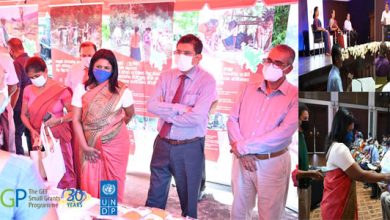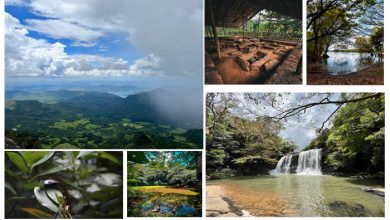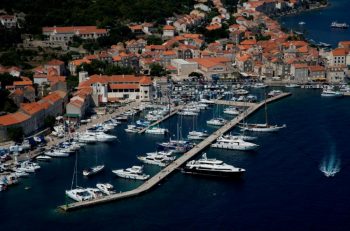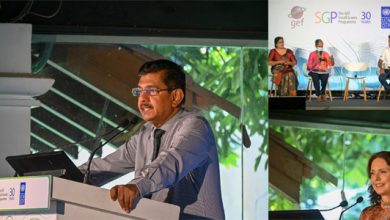7As and Promotion of Senior Tourism From Post-COVID Zero-Tourism to Senior Tourism
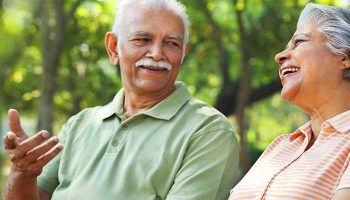
By
Damsi Dharmaratne and Prof. DAC Suranga Silva
It is obvious fact that the world’s population is ageing (https://www.un.org/en/sections/issues-depth/ageing/, 2020). Virtually every country in the world is experiencing growth in the number and proportion of older persons in their population.
Population ageing is poised to become one of the most significant social transformations of the twenty-first century, with implications for nearly all sectors of society, including labour and financial markets, the demand for goods and services, such as housing, transportation and social protection, as well as family structures and intergenerational ties.
Older persons are increasingly seen as contributors to development, whose abilities to act for the betterment of themselves and their societies should be woven into policies and programmes at all levels. In the coming decades, many countries are likely to face fiscal and political pressures in relation to public systems of health care, pensions and social protections for a growing older population.
- By 2030 12% or approximately 1 billion of the world population will be over 65
- By 2050 the elderly population will increase to 22%.
- In developed countries the population over 60 is growing 2% annually and expected to increase by 58% in the next forty years.
- In the developing countries, numbers have increased from 264 million in 2009 and forecasted to increase 416 million by 2050.
- In Sri Lanka by 2040 the percentage of elderly population would rise from 9.4% in 2015, 21%by 2045 to 35.6% by 2100.
Global Socio-Demographic Changes and Senior Tourism
Senior Tourism has been identified as one of the fast-growing niche market segments in global tourism despite the fact that the tourism industry in many countries in the region have not yet given much prominence for it. A significant number of senior persons in different parts of the world, more specifically in developed countries, have a growing tendency to travel in different parts of the world due to the push factors in their tourism demand: (1) Growing recreational income with increasing their financial and income capabilities, (2) Improving of their free and leisure time (3) Increasing the life expectancy (4) Improving health facilities (5) Increasing number of Empty Nesters (6) Seeking the tranquility and calmness life for senior citizens (7) Improving the wellness tourism (8) Developing travel infrastructure and communication facilities and also some other socio-demographic push factors.
Characteristics of Senior Tourists:
- High-spending senior travelers represent a fast-growing market segment
- Majority of these travelers plan their travels at least one year before
- A significant proportion of these travelers look for unique experiences along with the main purpose of leisure travels
- Most preferred destinations are developed countries but a significant proportion of them seek novelty and heterogenous travel experiences in distant and developing countries.
- Key travel behavior characteristics of
senior tourists:
- Group Travelling
- Single Tour Agents
- Warm Hospitality
- Provision of Disabled Facilities
- Curtesy and Caring
- Truth and Delivered with Warmth
- Freedom, Hassle Free Socializing Opportunities
- Soft Activity-Based Holidays
- Safety, Security
- Healthy Foods
- Choice of Sharing A Room with Same Gender
- Host-Community Contacts
- Tour Interpretation and Tourism Storytelling and Own Language Interpreters,
- Proper Tour Planning
- Evade Unexpected Changes
- Automated and Convenient Arrangements
Globalization and Senior Tourism:
The emergence of the trends in tourism has started with the concept of Globalization. With globalization the connectivity between nations occurred without considering the geographical distancing, the development of infrastructure, sharing of knowledge, travel of people around the globe and improvement of technology can be seen as the impact of it. This created the path for the people to travel from one destination to another and receive information and knowledge digitally.
Longer life expectancy and Senior Tourism:

It is visible that with the growth of year the life expectancy of the people increases. In 1900 the life expectancy level of people were 45 years and in 2019 it has increased to 80 years.
Impact on Health improvement and Senior Tourism:

Behind the prominent factors for the seniors to travel the long life and a better life can be highlighted. Senior tourists can be divided into two segments; healthy senior tourists and those who in need of medical treatments. Two third of people who are above 65 years have at least one of the chronic diseases; heart attacks, diabetes and 46% of the seniors have disabilities. With the aging factor their mental and physical stability starts to decrease. So, all of them are under medications though they travel. The seniors who require medical treatments look for them in other destinations. Majority prefers to take treatments combined with leisure. So, at the same time they have the ability to travel to popular tourists’ destinations and receive the medical treatments. Though the state is such the travelling of the senior tourists are growing due to the improvement of the medical and health facilities. They have the reassurance in the countries they travel about the quick and high-quality medical services.
Wealthiness of the senior tourists is the major demarcating factor from the other sets of tourists. Since they are retired and have no family commitments, they have enough money to spend on their vacations. Due to this reason they travel to other countries.
The model of the leisure paradox implies how the elderly people have ample of free time when they get old. In promotion of senior tourism one main factor that helps with the high focus on this segment is the availability of time and the finances. As mentioned here the income of the seniors gradually decreases but that is due to the factor of them not earning. Since they are retired, they have the saving money to use for the travel purposes.
Wealthiness and Wellness on Senior Tourism:

When people have more money only, they start to concentrate on their health and wellbeing. Just like that senior tourists who have enough money to spend concentrates a lot on their health factor. Health tourism can be divided into 3 sub sections; medical, therapeutic and wellness tourism. Sri Lanka having a strong background in the wellness tourism integrated with the ayurvedic tourism have a huge potential in catering to this segment. It is identified the tourists spend 53% more than the leisure tourists for this segment. Sri Lanka having a strong brand image for this segment has huge advantage in targeting this segment and increase revenue to the country.
7As and Promotion of Senior Tourism

The demand for travelling and the motivational factors that drive them to travel will be determined by the 5 As; attractions, accessibility, amenities, activities and accommodation. In order for a tourists to visit a country all these reuquirements should be fulfilled. If any of the As’ are not available within the destination that the tourists want to travel, they won’t be travelling to that particular destination. Prior promoting an attraction or a destination it is mandatory to see the availability of the As’. Affordability can be considered as the 6th A which is the most essential requirement to be fulfilled by the tourists. Tourists should be able to afford the entire tour in terms of accommodation charges, transportation charges, entrance fee etc. If the tourists are unable to cope up with the prices they won’t be travelling to that destination. By understanding the exceptional market; senior tourism another essential component that can be introduced is affection which is a significant variable. Care, affection, love are three important factors when it comes to elderly people. Wherever they travel to they seek for these elements. By looking at how the tourists destination take care of the senior tourists, how hospitable they are towards the senior tourists and by seeing through the manner how the services will be provided and how they will be taken care of them during their entire stay effect on the travel motivation and on the behavior of the senior tourists towards selecting a tourists destination.

With the emerging trends and the demand patterns in the new normal the Senior tourists will continue to travel. The international tourists will book their tours via formal travel agencies and via online platforms. The main challenge that the tourists will go through is the health issues.
During this pandemic time the senior tourists who have chronical diseases will have a huge concern on because as it is found out by the World Health Organization the people who have chronical diseases have a high tendency of getting affected by the COVID- 19. According to the Centers for the Disease Control and Prevention there are approximately 85% of the senior people who have at least one chronic condition and 60% have two chronic conditions. The travelling to different destinations, out of their home would have a risk factor but the need and the motivation that drives them to travel in order to get rid of their monotonous lives is required. Apart from the seniors who travel and are suffering from chronic diseases the healthy senior travelers will have a risky point in travelling as well due to their low immunity levels and body strength to fight the virus. Normally when this segment travel, they have to undergo difficulties in acclimatizing during travel; facing to varieties of climate conditions of the country like the temperature, climate, humidity and altitude. With the aging factor their mental and physical stability starts to decrease. So, all of them are under medications though they travel. These occurrences have a huge negative consequence when the risk of virus come along with them. That is why it is said that there is a high tendency of this segment getting affected by the virus more than the others.
Global Best Practices in Promiting Senior Tourism
- Spain has initiated “Senior Travel 55+’’program promoting travelling in off season. As a part of the promotional strategy the Spanish government has subsidized the costs and have come up with a discounted pricing strategy. The main objectives to look at via this program are combatting the seasonality, generate more economic benefits to the country and have prolonged visitation to the country by the senior tourist.
- Poland has taken initiatives to make tourism appealing to senior tourist in their country. The country has an organization names “tourism against all the barriers” which work on making the product available for the customer. They highly believe that for a person to travel the aging factor is not a demarcation. The organization believe in that the older tourists will rejuvenate freshness energetic mindsets after being able to send time with nature.
- Poland has brought forward innovative measurements like Warmia Park Thermal Medical Center and “Forever Young Program” together understanding the demanding factor of the Senior tourists.
- South Africa is another country who has taken major steps in order to establish Senior tourism in their country. The pricing of the safaris over 60 years are given discounts in order to promote and increase visitation of them. The park resorts have the wheelchair arrangements
- The Tourism Authority of Thailand (TAT) has implemented “Tourism for all” campaign and along with the World Integrity Centre (WIC) organized the “Amazing Thailand Golden Experience” in order to serve for the senior and disabled tourists. The campaign has introduced nine routes specially to serve them; Pattaya, Phuket, Bangkok, Ratchaburi, Chiangmai, Kanchanaburi, Khon Kaen, Ayutthaya and Nakhon Ratchasima.


KEY STRATEGIES TO PROMOTE SENIOR TOURISM IN SRI LANKA
- In order to bring senior tourists to Sri Lanka the principal thing that the destination should do is ensuring the health and safety of the country. The assurance can be provided by the implementation of the resilient strategies and policy measures which would be feasible for the senior tourists to travel in leisure. Due to the high-risk factor of health, precautionary measures can be taken from the stakeholders’ side.
- Primarily the Sri Lanka Tourism Promotional Bureau (SLTPB) along with the other stakeholders have to ensure that the country is getting promoted among the senior tourists as a safe destination to travel. If the marketing and the promotional strategies would be successful only the senior tourists would be considered about travelling here.

- Extra care about the senior tourists could be taken starting from the airport itself.

- The tour guide can ensure the travelling safety en-route to accommodation and the accommodation units can also take extra measures about the senior tourists starting from the welcome drink they offer (making it a herbal drink that is good for the immunity system), include authentic traditional Sri Lankan food items to the buffet, introduce outdoor activities to make them active within the premises etc.

- The travelling agencies or the Destination Management Companies should be able to identify the current situation about the country and the risk factor for the senior tourists from it and ensure their safety before their arrival. The assurance can be given prior the arrival by them.
- The travelling agencies should have tailor made packages created especially for the senior tourists considering their demand factors. More weight should be given for the Ayurveda tourism, community-based tourism, cultural activities, agro tourism where they are able to maintain the social distancing assuring their safety and health and experience some authentic Sri Lanka lifestyles.


